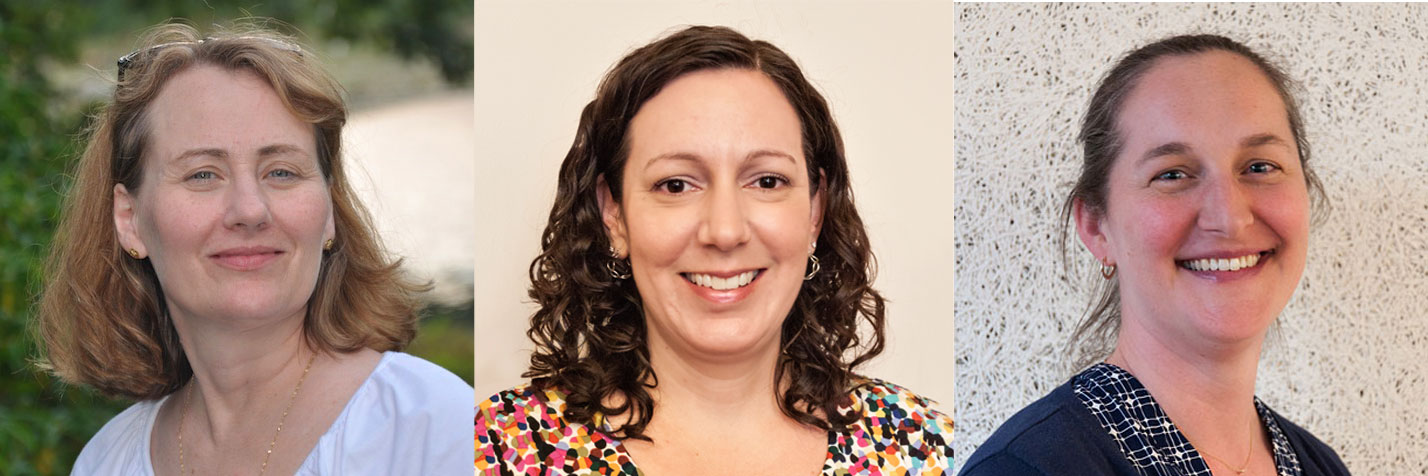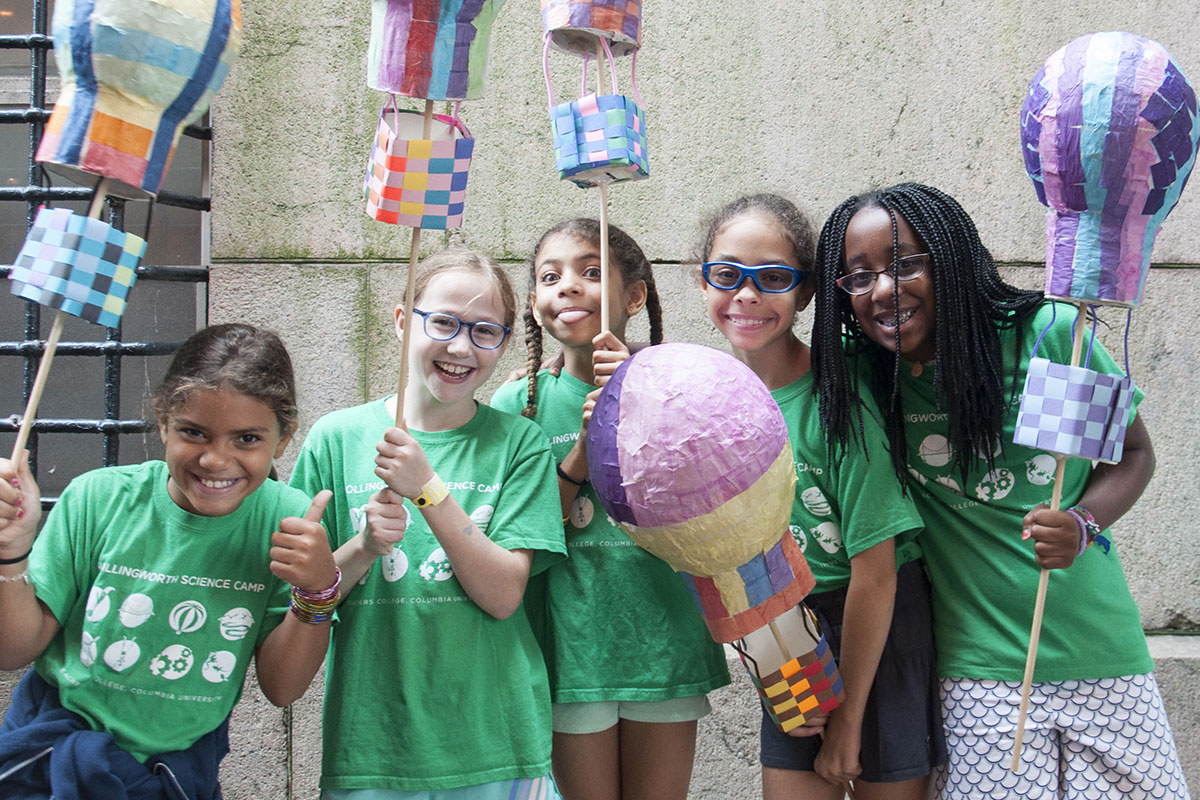It isn’t July at Teachers College without the sight of youngsters moving in groups through the hallways in their colorful Hollingworth Summer Science Camp tee-shirts; gathering for pickup by parents in Russell Courtyard; or marching in the end-of-camp parade, replete with their artwork and other creations, across the main Columbia campus.
That’s not happening this summer, but the popular day-camp — the other half of the Hollingworth Center, and a Morningside Heights fixture since 1981 — has been going forward online.
“The need for early science opportunities has never been more urgent,” Holllingworth Center Director Lisa Wright wrote in an email midway through the four-week summer camp in July. “The pandemic has illuminated the essential work of scientists on a daily basis, and science is what will get us to the other side of this...Yet, when schools went remote, elementary science, already marginalized, became nonexistent in the curriculum.”

THE SCIENCE CAMP TEAM From left: Hollingworth Center Director Lisa Wright; Jacquelyn Durán (Ph.D. ’18), Director of Science Initiatives; Alison Matthews, Curriculum Designer. (Photos: TC Archives)
Together with Jacquelyn Duràn (Ph.D. ’18), Director of Science Initiatives and alumna of TC’s Sociology and Education program; Alison Matthews, Curriculum Designer; and colleagues and graduate students, Wright began work in March on a virtual iteration of the science camp, which serves an age group that ranges from rising first graders through rising fifth graders. “What we did not do is take the science camp and move it online,” she says. “We created a purpose-built program, Hollingworth Science Online [HSO], for inquiry science and remote learning for young children.”
The need for early science opportunities has never been more urgent. The pandemic has illuminated the essential work of scientists on a daily basis, and science is what will get us to the other side of this...Yet, when schools went remote, elementary science, already marginalized, became nonexistent in the curriculum.
— Lisa Wright, Hollingworth Center Director, in a note to parents
Through July, the Hollingworth Science Camp is hosting students in two, two-week sections, for three hours per day, a shorter version of in-person camp, which normally runs for seven hours a day, five days a week. The online tuition was cut to a fifth of its normal level, with campers offered the option of receiving refunds on the original fee or contributing a portion back to the camp. The camp has netted $10,000 in donations.
The campers hail from 50 different schools and include two international students, one from the Philippines and one from Japan. One benefit to going online, Wright says, is that the children get to connect with scientists in far-flung locations, including a geoscientist doing fieldwork in England, a marine scientist at the Mystic Aquarium in Connecticut who did sessions on penguins and beluga whales, a meteorologist with the National Oceanic and Atmospheric Administration, and a scientist at the Piedmont Wildlife Center in North Carolina, who explained that the reason why owls can do those cool 270-degree head-turns is that they have 14 neck bones, compared to humans’ measly seven.
So far, the campers have responded enthusiastically Wright says. “What we are seeing is the depth of the children's scientific thinking, their engagement, their inquiry, and much more.” While online science will never replicate the hands-on kind, Wright would like to retain some elements of the online experience when the science camp returns to the College. Duràn and Wright are studying the response of campers this year with the hopes of using the results to secure funds for future online projects for children in public schools.
“While we will return to in-person camp on campus,” she said, “the hope is that we will continue with a remote offering, because we can touch people around the globe.”
— Patricia Lamiell
[Read the related stories So How Do You Do Pre-K Online? about the Hollingworth Center; and Thinking Even Younger about the Rita Gold Early Childhood Center.]
